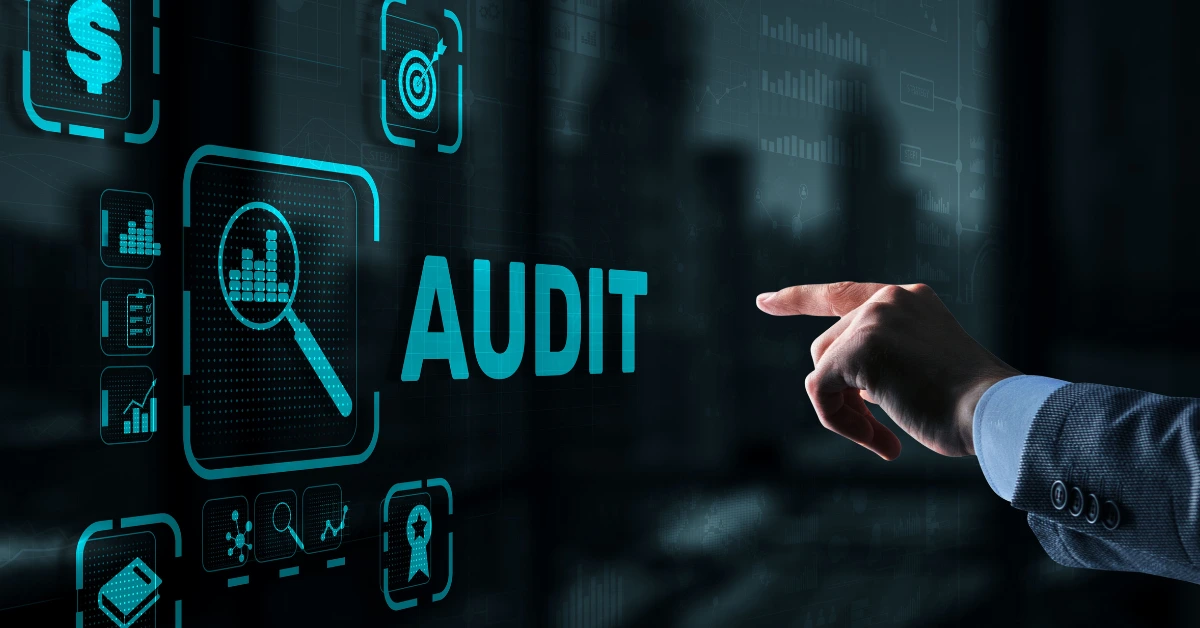Technical SEO is the practice of ensuring a website meets modern search engines’ technical requirements such as crawling, indexing, rendering, site speed, structured data, and architecture to maximize visibility and rankings. This includes elements like XML sitemaps, structured data (e.g., schema.org), Core Web Vitals, mobile-friendliness, canonical tags, hreflang, HTTPS, robots.txt directives, JavaScript optimization, server performance, redirects, and canonicalization
Technical SEO ensures bots can easily discover, interpret, and evaluate your content. If search engines can’t access your pages quickly, crawl them intelligently, or understand the content, your SEO efforts may be blocked. It underpins everything from site structure to user experience to page authority.
Why “What Is Technical SEO?”?
Putting “What Is Technical SEO? A 2025 Guide for Faster Rankings” front and center hits both semantic precision and search intent. Users asking “what is…” are often beginners or researchers seeking a foundational overview ideal for targeting informational intent. This keyword aligns with semantic SEO, which optimizes for context, intent, and entities rather than just exact-match keywords .
1. Keyword Research: The Foundation

Brainstorm and Seed Selection
- Start broad: List core themes like “technical SEO,” “site speed optimization,” “XML sitemap best practices,” “structured data examples.”
- Use tools: Google Keyword Planner, Ahrefs, SEMrush, Moz to find metrics: volume, CPC, keyword difficulty, and related terms
- Mining related searches: Explore “People also ask,” “related searches,” and forums like Reddit/Quora to uncover real user questions. E.g., “How to audit technical SEO?” or “What is a canonical tag?”
Clustering: Semantic & NLP Keyword Grouping
- Group keywords by intent informational, navigational, commercial. Technical SEO is mainly informational but with overlap into commercial (e.g., agencies offering SEO audit services)
- Use keyword clustering tools so your content answers a spectrum of queries not only head terms but also variations like “technical SEO checklist,” “SEO site structure best practices” .
- This semantic approach ensures LLM-powered search engines recognize you’re covering full context, not just repeating your seed phrase .
Example of Clusters
| Pillar | Head Keyword | Cluster Keywords & Queries |
| Site Structure | technical SEO site architecture | shallow site structure, internal linking, silo structure tutorial |
| Speed & Web Vitals | technical SEO site speed | Core Web Vitals optimization, speed audit tools, less than 1 second load |
| Crawling / Indexing | technical SEO crawl budget | robots.txt best practices, XML sitemap importance, prevent crawler traps |
| Schema & Entities | technical SEO structured data | How to add schema markup, FAQ schema, Knowledge Graph, entity markup |
| International SEO | technical SEO hreflang | multi-language site, hreflang implementation examples |
2. Semantic SEO: Entities, Topics & Related Terms
What Is Semantic SEO?
Semantic SEO leverages entities (Google’s Knowledge Graph), topics, and user intent to create deeply contextual content. It isn’t confined to exact-match keywords it explores a network of related terms and questions to deepen relevance.
Entity-Based Content Strategy
An effective 2025 SEO strategy includes:
- Identify core entities with schema markup: e.g. “Technical SEO,” “Core Web Vitals,” “XML Sitemap.”
- Topic clusters: Build pillar pages (e.g., What is Technical SEO?), sub-pages (site speed, site architecture, structured data), all internally interlinked. This mirrors Google’s entity relationships
- Use different schema types: Article, FAQ, Breadcrumb, Organization, and how they relate in a knowledge graph .
NLP & LSI Keywords
- Integrate NLP keywords (e.g., “render-blocking resources,” “cumulative layout shift,” “mobile-first indexing”) to signal synonyms and related concepts.
- Use LSI/latent semantic indexing: include synonyms and contextually related phrasing like “optimize internal links” instead of repeating “site structure” .
3. Question‑Type Keywords: Capturing “How,” “Why,” and “What” Queries

- What is Technical SEO? (head term)
- How does technical SEO impact site speed?
- Why are structured data and schema important?
- How to fix crawl errors in Google Search Console?
- When to use canonical tags vs. 301 redirects?
- Which tools to analyze Core Web Vitals?
Writing in Q& format and applying FAQ schema lets your content appear in SERP features like People Also Ask and voice assistants.
4. In‑Depth Topic Coverage & Examples
Crawling, Rendering & Indexing
- Explain crawl budget: manage robots.txt, minimize crawl traps, use nofollow for low‑value URLs
- Discuss server logs analysis to see how bots crawl your site and where issues lie.
- Illustrate JavaScript SEO challenges: deferred JS, poor rendering common obstacles
- Example: A site with 10,000 pages and deep nested architecture might lose bot access to low-tier pages; flat structure improves indexation speed.
Site Speed & Core Web Vitals
Key metrics: Largest Contentful Paint (LCP), First Input Delay (FID), Cumulative Layout Shift (CLS).
Optimization tactics:
- Lazy load images/videos.
- Minify CSS and JS.
- Enable Brotli/Gzip compression.
- Preconnect/preload critical resources.
Use Google PageSpeed Insights, Lighthouse, GTmetrix, WebPageTest.
Example: Switching to Brotli reduced LCP from 3.2s to 1.8s and increased ranking position by 2–3 spots on desktop.
URL Structure, Site Architecture & Internal Linking
- Aim for a flat architecture (max 3 clicks from homepage) .
- Use readable, keyword‑rich URLs: e.g., /technical-seo/site-speed-guide.
- Implement breadcrumb navigation and consistent internal linking to signal hierarchy.
XML Sitemaps & Robots.txt
- XML sitemaps list prioritized canonical URLs; submit via Search Console
- Use Robots.txt to block crawling of admin pages, faceted filters, and avoid duplicate content.
Example robots.txt:
makefile
CopyEdit
User-agent:
Disallow: /wp-admin/
Disallow: /tag/
Allow: /wp-admin/admin-ajax.php
Sitemap: https://example.com/sitemap_index.xml
Structured Data & Knowledge Graph
- Apply Schema.org markup: Article, BreadcrumbList, FAQPage, HowTo, WebPage.
- Include entity identification: e.g., “@context”: “https://schema.org”, “@type”: “Article”, “headline”: …
- Example: A “What Is Technical SEO?” FAQ section with schema boosts SERP visibility.
International SEO & Hreflang
- For multi-language sites, implement hreflang tags to target language/region (e.g., x-default, en-IN, te-IN).
- Serve localized content, host on ccTLD/subfolders, and set <link rel=”alternate” hreflang=”…”>.
Canonicalization, Redirects & Duplicate Content
- Use canonical tags to avoid duplicate indexation (e.g., printer-friendly versions).
- 301-redirect deprecated content or merged pages.
- Identify duplicate content through Search Console coverage and crawl budget WASTAGE.
- Example: canonicalizing ?sessionid= and /index.html variations to /.
5. Technical SEO Audit & Tools

Crawl & Analyze
- Use tools: Screaming Frog, Sitebulb, DeepCrawl, Ahrefs Site Audit.
- Key checks: 404s, 301 chains, redirect loops, missing meta tags, duplicate content, broken internal links.
Log Analysis
- Server logs reveal crawler access paths and issues.
- Example: If bots are crawling cart pages or search result pages, block them to preserve crawl budget.
Monitoring & Alerts
- Use Search Console, Lighthouse, PageSpeed Insights for ongoing monitoring.
- Create alert workflows (e.g., exceeding CLS thresholds).
6. Advanced Strategies & Future‑Proofing
Entity Optimization & Knowledge Graph Signals
- Use detailed schema and internal linking to associate your content with broader entity clusters.
- Ensure your entity data aligns with Google’s Knowledge Graph identifiers .
Voice Search & Conversational Queries
- Optimize presence in FAQ/HowTo schema to capture voice assistant responses (“Hey Google, what is technical SEO?”).
AI‑Driven Tools & LLMs
- Use AI for theme-aware keyword extraction (LLM‑TAKE) to discover latent keyword paths
- Expand through prompts like “List NLP-friendly terms for technical SEO” to enrich coverage.
Assessing Impact
- Small improvements (e.g., 0.5s faster LCP) can boost CTR and session durations.
- Example: One e‑commerc brand increased conversions by 6% after removing a render-blocking script.
7. Structured Keyword Workflow
- Seed & Brainstorm – list head terms and use tools + search suggestions.
- Tool Expansion – gather volumes & difficulty.
- Question Mining – use Reddit, “People also ask”, forums.
- Clustering – group by intent/topic using SERP-based clustering
- Mapping to Site Structure – assign to pillar/sub-pages.
- Content Planning – outline with Q&As, examples, schema integration.
- Write & Optimize – include head, semantic, LSI, NLP terms naturally.
- Technical Implementation – optimize HTML, schema, speed, crawl control.
- Audit & Measure – track via PageSpeed, Search Console, logs.
- Iterate & Refresh – content audits, refresh based on new queries and data.
Final Checklist
- Defined core keyword and 10+ semantic/NLP related terms
- Identified 5–10 question-type queries
- Created topic-cluster architecture with internal linking
- Included relevant schema markup (Article, FAQ, Breadcrumb)
- Optimized speed (LCP, CLS, FID) using PWA techniques
- Enforced proper crawling, canonical, hreflang, robots directives
- Used AI-assisted NLP keyword expansion
- Set monitoring with PageSpeed Insights, Search Console, crawl tools
Why This Approach Works in 2025
- Entity-focused SEO caters to Google’s focus on knowledge graphs
- Rich Q&A content improves CTR via SERP features and voice results.
- Semantic and NLP keywords help LLM-based Google models understand depth and relevance.
- Technical excellence (site speed, crawlability) is now a ranking baseline.
- Continuous auditing and AI‑powered refresh ensure your content remains topically authoritative and discoverable.









Share